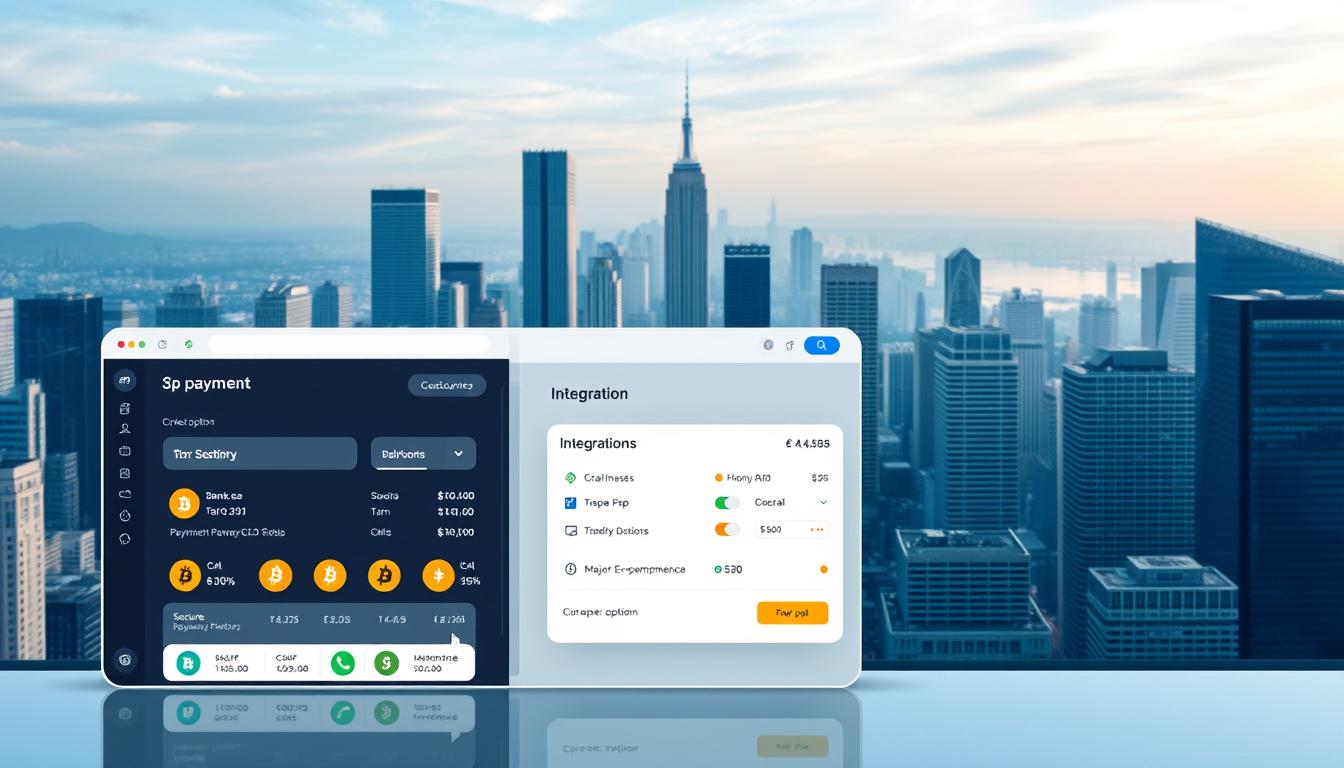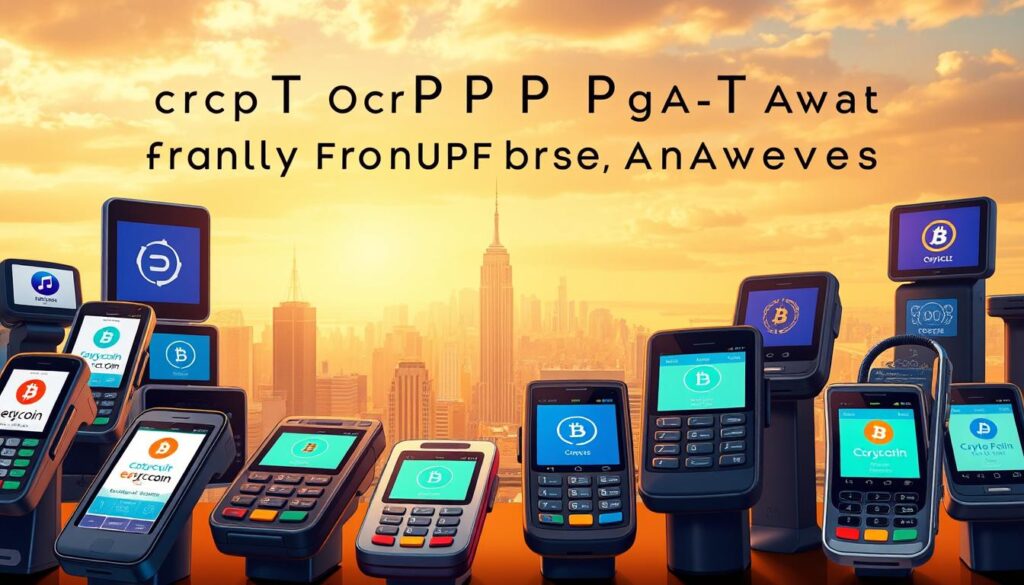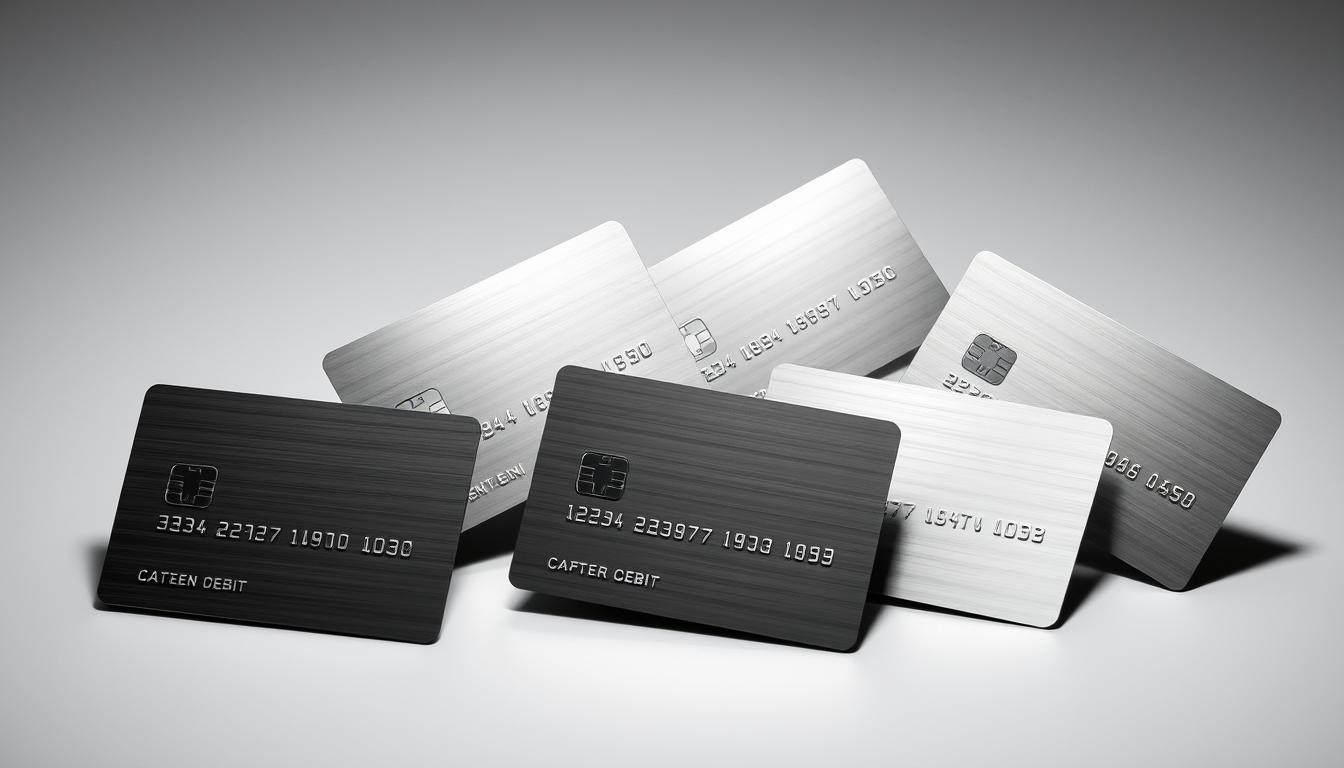Now Reading: Unlocking Crypto Payments in the USA: A Step-by-Step Guide
- 01
Unlocking Crypto Payments in the USA: A Step-by-Step Guide
Unlocking Crypto Payments in the USA: A Step-by-Step Guide

Businesses in the U.S. are now accepting cryptocurrency as a payment option. This guide will show you how to use crypto payment gateways in the USA. It’s easy to follow and will help you understand how to start using crypto in your daily transactions.
Key Takeaways
- A practical roadmap for adopting crypto payments in American businesses.
- Explore how crypto reduces fees and expands customer reach.
- Understand U.S. regulatory requirements for crypto transactions.
- Discover security strategies to protect against fraud and volatility.
- Follow clear steps to set up crypto payments without technical expertise.
Understanding Crypto Payment Gateways in the Digital Economy
Crypto payment gateways are digital systems that let businesses take cryptocurrency payments. They change crypto into regular money or keep deals on blockchain. Tools like Coinbase Commerce and BitPay make it easy for merchants.
What Are Crypto Payment Gateways?
These gateways connect buyers and sellers. They check transactions and often change crypto into stable money. A crypto payment gateways tutorial usually shows how to set up and connect to websites.
The Evolution of Cryptocurrency Payments
- 2009: Bitcoin’s launch introduced peer-to-peer digital transactions.
- 2013: First merchant plugins emerged for e-commerce platforms.
- 2020s: Layer-2 solutions like Lightning Network reduced fees and delays.
Now, businesses use these systems to skip credit card fees and serve crypto fans.
Key Components of a Crypto Payment System
Every system needs three main parts:
- Wallets: Safe places to store crypto assets.
- Blockchain Networks: Public ledgers that confirm deals.
- Exchange Services: Places that change crypto to USD or other money.
Security steps like encryption and multi-signature wallets fight fraud.
Businesses that use crypto get more freedom. But, they must pick good gateways and know how they work.
The Regulatory Landscape for Crypto Payments in the United States
Crypto payment gateways in the United States face rules from both federal and state governments. Businesses must follow laws from the Financial Crimes Enforcement Network (FinCEN), Securities and Exchange Commission (SEC), and Commodity Futures Trading Commission (CFTC). These groups enforce rules on anti-money laundering, securities, and commodities in crypto transactions.
- FinCEN requires businesses to report large crypto transactions and identify customers (KYC).
- SEC scrutinizes crypto assets classified as securities, impacting how platforms process payments.
- CFTC oversees crypto derivatives, ensuring compliance with commodity trading rules.
State laws also play a big role. New York has strict BitLicense rules for virtual currency firms. Wyoming, on the other hand, has more relaxed rules. Businesses need to check local laws to avoid legal trouble.
Staying compliant means keeping up with regulatory changes. To use crypto payment gateways safely in the USA, businesses should do regular audits and stay updated on agency news. The SEC’s recent actions show how crucial it is to follow federal policies. By adapting to these rules, businesses can use crypto payments without facing legal issues.
Benefits of Implementing Crypto Payment Solutions for American Businesses

Using cryptocurrency for online payments brings big wins for American businesses. It beats old payment systems in many ways. It saves money and opens up new markets, helping businesses grow.
Reduced Transaction Fees
Old payment systems charge 2–3% per transaction. But, best crypto payment gateways cut fees to under 1%. For instance, a business making $100,000 a month could save over $2,000 in fees. Small shops and online stores see their profits go up right away.
Global Market Access
Crypto breaks down borders. Businesses can get payments from people all over the world without extra fees. With over 300 million crypto users worldwide, new markets in Europe and Asia are open without banking problems.
Enhanced Payment Security
Blockchain tech keeps transactions safe with strong encryption. Unlike credit cards, crypto doesn’t store sensitive info. It only needs private keys, which the owner controls. This cuts down on fraud seen in traditional systems.
Protection Against Chargebacks
Crypto payments can’t be reversed once they’re confirmed on the blockchain. This stops chargeback fraud, saving businesses from $42 billion lost each year. Merchants keep control over their funds without any disputes.
How to Use Crypto Payment Gateways in the USA: Core Steps
Starting with crypto payments is easier with a clear plan. This step-by-step crypto payment gateways guide outlines key steps for businesses using blockchain. It helps you get started.
Selecting the Right Crypto Payment Gateway
First, find a gateway that fits your business. Look at these important points:
- Cryptocurrency compatibility (Bitcoin, Ethereum, etc.)
- Transparent fee structures and withdrawal limits
- Settlement options (holding funds in crypto or convert to USD)
- User interface design for merchant dashboards
- API compatibility with existing e-commerce platforms
Account Setup Process
Here’s how to set up your account with this crypto payment gateways tutorial:
- Submit business documentation (EIN, bank details)
- Complete KYC/AML verification steps
- Configure payment thresholds and fraud filters
- Enable 2FA for account protection
Wallet Integration Essentials
Integrate wallets securely with these tips:
- Choose custodial wallets for beginner-friendly options
- Set up non-custodial wallets for full control over private keys
- Test blockchain transaction simulations before live deployment
- Configure automatic fiat conversion for volatility protection
Top Crypto Payment Gateway Providers in the United States
When picking best crypto payment gateways, businesses look for reliability and features. The top crypto payment gateways in the USA offer solutions for different needs. A 2024 review by SitePoint shows leaders like BitPay and Coinbase Commerce are most trusted. Here are some key options to think about:
- BitPay: Supports Bitcoin and Lightning Network, with instant USD conversion. It’s great for businesses needing PCI-compliant solutions.
- Coinbase Commerce: Works with Shopify and WooCommerce, with fees from 1.4%-3.5%. It’s known for easy-to-use dashboards.
- CoinPayments: Handles over 170 cryptocurrencies, with no setup fees. It’s good for businesses with a lot of transactions.
- PayPal Crypto: A well-known option with fees from 1.9%-4.5%. It’s perfect for businesses already using PayPal.
- NOWPayments: Offers no transaction limits and supports fiat conversion. It’s popular with NFT and gaming platforms.
New providers like CoinGate are great for luxury retailers with discreet invoicing. Businesses should look at fees, supported currencies, and how easy it is to integrate. By matching features with their goals, merchants can find the best gateway for their crypto strategy.
Security Considerations When Implementing Cryptocurrency Payments
Setting up secure crypto payment gateways is crucial. Businesses must protect transactions and user data. They need to fix vulnerabilities at every step to keep things reliable.

Private Key Management
Private keys unlock cryptocurrency assets. Here are some best practices:
- Keep keys in hardware wallets like Trezor or Ledger for offline safety
- Use cold storage away from the internet
- Choose multi-signature systems needing many approvals for moves
- Go for licensed custodial services with solid compliance records
Multi-Factor Authentication Implementation
Adding layers of security is key. This includes:
- Using MFA for admin accounts setting up the gateway
- Securing wallet access interfaces
- Protecting employee accounts with transaction approval power
Biometric and TOTPs are great against unauthorized access.
Transaction Monitoring Tools
Watching transactions in real-time is vital. This is done through:
- Automated fraud detection algorithms
- Blockchain analysis tools tracking paths
- Custom alerts for odd volume spikes or cross-chain moves
Regular security audits and training are essential. They help fight new threats. This builds trust and keeps payments smooth for customers.
Technical Integration Process for Your Website or Platform
Adding crypto payment options to your site needs careful planning. You must pick the best method for your website. Crypto payment gateway integration offers solutions that fit your technical level and platform type.
API Integration Methods
Developers often use REST APIs to link payment systems. Key steps include:
- Generating API keys for secure access
- Implementing webhooks to track transaction updates
- Testing payment confirmation workflows
Payment gateway providers often give code snippets for payment buttons and transaction checks.
Plugin Solutions for Popular E-commerce Platforms
Platforms like Shopify and WooCommerce make using cryptocurrency for online payments easy with pre-built plugins. For example:
- Shopify: Install apps like Crypto.com Pay or BitPay
- WooCommerce: Use plugins like EasyCrypto or CoinGate
- Magento/BigCommerce: Deploy official gateway extensions
Follow provider documentation for steps like API key setup and currency pair selection.
Custom Development Considerations
Businesses with special needs might need custom code. Key factors include:
- Legacy system compatibility checks
- Load testing for high-traffic scenarios
- Real-time blockchain monitoring tools
Developers should focus on sandbox testing and compliance audits before full deployment.
Managing Crypto Volatility in Your Payment System
Cryptocurrency prices can change a lot, affecting your income. Secure crypto payment gateways in the USA now have tools to help. Here are steps businesses can follow:
- Automate instant conversion to stablecoins like USDC or tether via platforms like BitPay or Coinbase Commerce to lock in real-time USD equivalents.
- Set strict payment deadlines (e.g., 15 minutes) to minimize exposure to sudden price drops.
- Enable dynamic pricing through gateway APIs that adjust quoted amounts in real time based on market data.
- Use hedging services from providers like MoonPay to offset potential losses using pre-negotiated rates.
When using crypto payment gateways in the USA, businesses face a choice. They can either convert crypto to USD right away or hold it. For example, Crypto.com Pay lets merchants keep crypto while watching price changes. If Bitcoin falls 10%, they can switch to USD fast.
Businesses need to keep records of both crypto and USD values for tax reasons. Secure gateways like Blockchain.com Payments make tracking easier. By using these strategies, businesses can stay innovative while keeping their finances stable. They don’t have to give up on making things easy for customers.
Accounting and Tax Implications of Accepting Crypto Payments
Managing taxes and accounting for crypto payments needs careful planning. Businesses in the United States must follow IRS rules and state laws to avoid fines. This section explains how to comply, including keeping records and reporting.
Record-Keeping Requirements
Keep accurate records for every transaction. Important details include:
- Acquisition date and USD value at time of receipt
- Transaction identifiers (blockchain hashes or wallet addresses)
- Date and value when crypto is converted to USD or spent
Tools like Cointracking.io or CryptoTaxCalculator help track and create reports for the IRS.
IRS Reporting Guidelines
The IRS treats crypto as property, so you must report capital gains. Key steps include:
- File Form 8949 annually, detailing each transaction’s profit/loss
- Include crypto income on Form 1040 Schedule D
- States like California and New York may require additional filings
Not reporting crypto transactions can result in audits or fines.
Working with Crypto-Savvy Accountants
Choose accountants who know about crypto. Ask:
- Do you use crypto-specific accounting software?
- Have you helped businesses file Form 8949 before?
- Are you aware of state-level crypto tax rules?
Services like Libertas or BitWage offer certified accountants who understand crypto compliance. The step-by-step guide can help with reporting.
Customer Experience Considerations for Crypto Payment Systems
Creating easy-to-use crypto payment systems begins with clear design. A crypto payment gateways tutorial should help users link wallets and verify transactions. Top platforms like BitPay and Coinbase Commerce from the top crypto payment gateways in the USA list are great examples. They show how simple interfaces make things easier for everyone.
- Use QR codes for quick mobile payments
- Display real-time exchange rates for crypto-to-fiat conversions
- Show clear timeout warnings before transaction cancellations
- Provide instant confirmation receipts via email/SMS
New users need easy access to help. Live chat and FAQs can answer questions about network delays or fees. Make sure failed transactions are easy to retry without getting stuck.
For example, Blockchain.com’s checkout screens are easy to follow. Wyre’s tooltips explain gas fees well. Training staff on crypto basics helps them assist customers better. Also, let customers know about price changes during checkout to avoid surprises.
Common Challenges When Implementing Crypto Payment Gateways
Using crypto payment systems comes with its own set of challenges. Businesses face technical, customer, and operational hurdles. These obstacles can make integrating crypto payment gateways tough. Let’s explore these challenges and find solutions.
Technical Hurdles and Solutions
- API Compatibility: Many old systems have trouble with crypto APIs. Look for gateways like BitPay or Coinbase Commerce that have clear API guides.
- Testing Limitations: Use sandbox environments to test transactions before going live.
- Reconciliation Gaps: Tools like Chainalysis or Koinly help track transactions automatically.
Customer Adoption Barriers
Some users might be hesitant due to lack of knowledge. Here are some strategies:
- Provide crypto education on your website.
- Give cashback rewards for using crypto.
- Make checkout easy with QR codes and converters.
Managing Blockchain Confirmation Times
Blockchain confirmation delays can upset users. Here are some solutions:
- Zero-Confirmation Options: Accept small payments right away for low-risk deals.
- Layer 2 Solutions: Use the Lightning Network for Bitcoin or Polygon for Ethereum to speed up transactions.
- Transparent Communication: Show real-time confirmation timers during checkout.
Beating these challenges needs careful planning. Focus on choosing the right partners, training staff, and educating customers. This will help you use crypto payment gateways in the USA well.
Case Studies: Successful Crypto Payment Implementations in US Businesses
Real-world examples show how businesses across different industries use crypto payments. Overstock.com used best crypto payment gateways like Coinbase Commerce. This allowed customers to pay with Bitcoin and Ethereum.
This move increased international sales by 30% and cut cross-border fees by 15%. By accepting crypto directly, Overstock streamlined transactions without needing intermediaries.

A Midwest coffee chain, Bean There Brew That, teamed up with MoonPay to offer crypto options at 10 locations. In just six months, crypto payments made up 12% of their revenue. This attracted tech-savvy customers.
The gateway’s API integration took only three days. This cut traditional card fees by 8%. “Using cryptocurrency for online payments expanded our customer base without overhauling our POS systems,” said the owner.
Software firm CloudSolutions Inc chose BitPay for SaaS subscriptions. By accepting crypto, they reduced credit card processing costs from 2.9% to 0.5%. The gateway’s instant settlement feature converted 45% of crypto payments into USD automatically, balancing volatility risks.
Their customer acquisition rate rose 22% after launching.
- E-commerce: Overstock – 30% international sales growth
- Retail: Bean There Brew That – 12% revenue from crypto
- SaaS: CloudSolutions – 80% fee reduction
These examples show that effective implementation needs reliable gateways, aligning with business needs, and educating customers. It’s also key to be transparent about fees and conversion options for adoption.
Scaling Your Crypto Payment Solutions as Your Business Grows
As your business grows, it’s key to adapt your crypto payment systems. Secure crypto payment gateways in the United States need to grow with your transactions. Start by checking your infrastructure’s limits. Look at server capacity and database performance to prevent delays during busy times.
Use load balancing tools to spread traffic across servers. Add backup nodes for uptime during busy times. Real-time monitoring helps track blockchain fees, preventing spikes during peak hours. For businesses in different locations, find crypto payment gateways that support various currencies or meet local rules.
- Automate liquidity management to convert crypto into fiat when needed.
- Upgrade security with advanced encryption for high-value transactions.
- Train staff on scaling strategies and assign teams for crypto operations.
Choose scalable APIs for easy integration with new payment methods. Work with providers that offer tiered pricing to grow with your business. Regularly check systems to follow new rules and security standards. Scaling needs careful planning—build flexible systems now for smoother growth.
Alternative Cryptocurrency Payment Methods Beyond Gateways
Businesses looking to expand their crypto options can explore beyond the usual top crypto payment gateways in the USA. This step-by-step crypto payment gateways guide shows three alternatives: direct transfers, scaling tech, and stablecoins. These options offer speed, cost savings, and stability, fitting different needs.
Direct Wallet-to Wallet Transfers
Direct transfers skip third-party services. Businesses can:
- Generate unique wallet addresses per customer using tools like Bitcoin Core
- Verify transactions manually via blockchain explorers like Etherscan
- Automate address creation with self-hosted servers for high-volume use cases
Lightning Network and Layer 2 Solutions
The Lightning Network speeds up Bitcoin transactions by using off-chain channels. Setup steps include:
- Deploying nodes using LND or C-Lightning software
- Configuring payment channels for instant microtransactions
- Integrating APIs to sync with existing invoicing systems
Stablecoin Payment Options
Stablecoins like USDC, USDT, and DAI offer stability like fiat. Key considerations:
- USDC: Regulated via Circle, ideal for compliance-focused businesses
- USDT
- DAI: Decentralized stability via MakerDAO’s system, suited for DeFi users
Widespread adoption but requires auditing for transparency
These methods are great for high transaction volumes, low fees, or regulatory needs. Businesses should look at each option’s technical needs and compliance before choosing.
Embracing the Future of Digital Payments in America’s Evolving Economy
Digital payments are changing fast, and U.S. businesses need to keep up. New technologies like Central Bank Digital Currencies (CBDCs) and the U.S. digital dollar could change how we pay. Decentralized finance (DeFi) and the Lightning Network are making payments quicker and cheaper.
Companies that start using crypto payment gateways today are preparing for the future. They focus on secure systems and learn from crypto payment gateways tutorials. By using new tech like IoT and AI, they can automate more. And by following the rules, they stay safe for the long run.
The old ways of paying money are being challenged by crypto. Businesses that grow with scalable solutions will lead the change. They need to be secure, educated, and innovative to meet new rules and customer needs. Starting the journey to digital payment success is all about making smart moves now.
FAQ
What are the best crypto payment gateways available in the USA?
In the United States, top crypto payment gateways include BitPay, Coinbase Commerce, CoinPayments, and PayPal Cryptocurrency. They offer features like support for many currencies, low fees, and easy setup for businesses.
How do I integrate a crypto payment gateway into my online store?
To add a crypto payment gateway, first choose a provider. Then, create an account and set up wallets. Use plugins or APIs to link it to your e-commerce site. Each provider has its own steps, so following their guides is key.
Are crypto payment gateways secure for online transactions?
Yes, secure crypto payment gateways use encryption, multi-factor authentication, and blockchain. Businesses should also manage private keys and add extra security to keep transactions safe.
Do I need to comply with specific regulations when accepting cryptocurrency payments?
Yes, businesses in the USA must follow rules from FinCEN, the SEC, and state governments. This includes Know Your Customer and Anti-Money Laundering rules. It’s wise to get legal advice to make sure you’re following the law.
What are the benefits of using a crypto payment gateway?
Using a crypto payment gateway can lower fees, reach more customers worldwide, and offer better security. It also protects against chargebacks. This can attract tech-savvy customers looking for new payment options.
How can I manage cryptocurrency volatility in my payment system?
To handle volatility, you can convert payments to stablecoins or fiat currency right away. You can also use dynamic pricing or set payment limits. These steps help manage the risks of price changes.
What tax implications should I consider when accepting crypto payments?
Cryptocurrencies are taxed like property, so keep detailed records of transactions. This includes when you got them and their value at that time. Following IRS guidelines is important for tax compliance.
How can I enhance my customer’s experience when using crypto payment gateways?
Make your payment interface easy to use and provide clear instructions. Offer good customer support and teach customers about cryptocurrency benefits. This can make using crypto payments smoother for them.
What common challenges do businesses face when implementing crypto payment gateways?
Businesses might face technical issues, getting customers to use crypto, and dealing with blockchain confirmation times. Overcome these by providing strong technical support, making the interface simple, and explaining transaction times clearly.
How can businesses scale their crypto payment solutions as they grow?
To grow, upgrade your server capacity, use load balancing, and ensure your system can handle more transactions. Be ready for global growth and adjust your security as needed.













